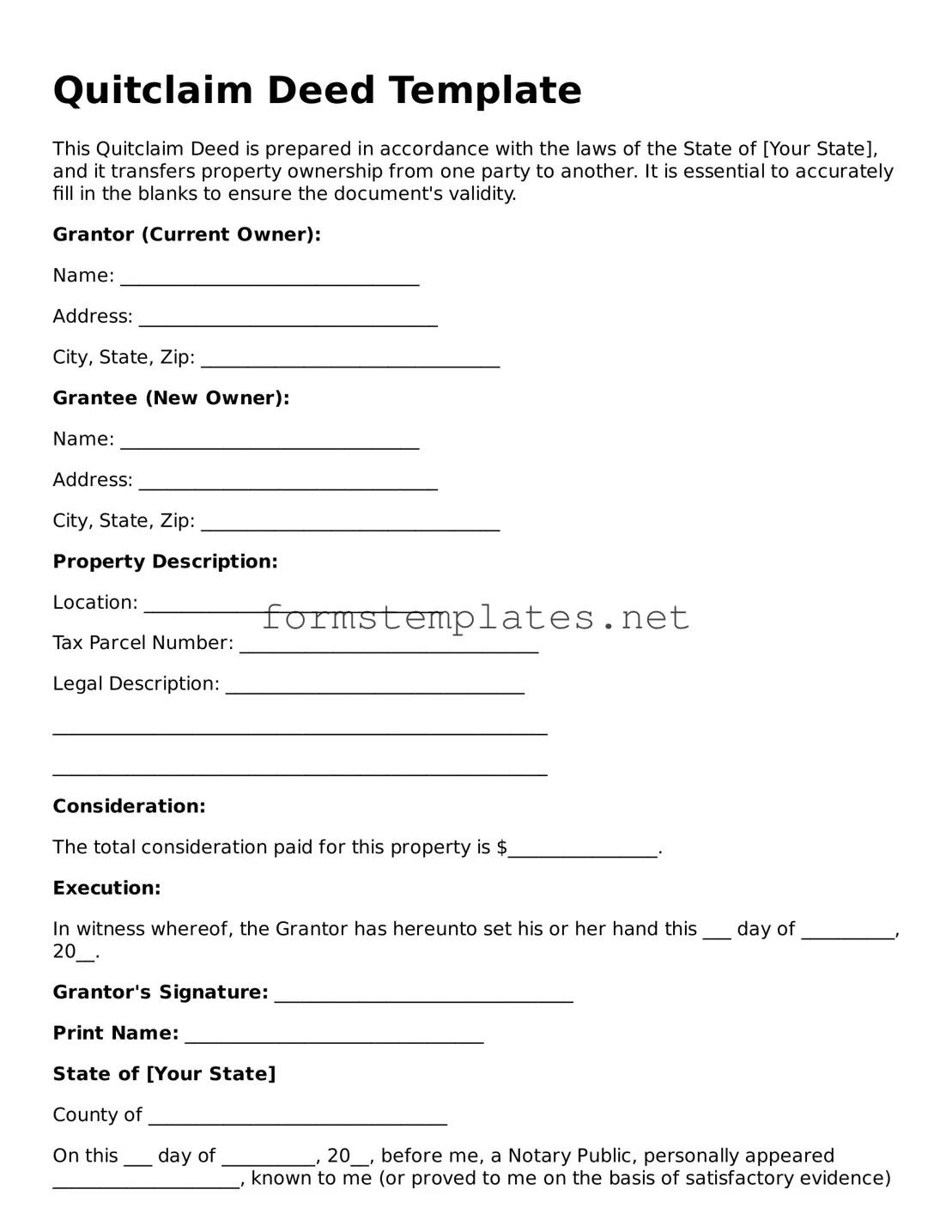Quitclaim Deed Template
This Quitclaim Deed is prepared in accordance with the laws of the State of [Your State], and it transfers property ownership from one party to another. It is essential to accurately fill in the blanks to ensure the document's validity.
Grantor (Current Owner):
Name: ________________________________
Address: ________________________________
City, State, Zip: ________________________________
Grantee (New Owner):
Name: ________________________________
Address: ________________________________
City, State, Zip: ________________________________
Property Description:
Location: ________________________________
Tax Parcel Number: ________________________________
Legal Description: ________________________________
_____________________________________________________
_____________________________________________________
Consideration:
The total consideration paid for this property is $________________.
Execution:
In witness whereof, the Grantor has hereunto set his or her hand this ___ day of __________, 20__.
Grantor's Signature: ________________________________
Print Name: ________________________________
State of [Your State]
County of ________________________________
On this ___ day of __________, 20__, before me, a Notary Public, personally appeared ____________________, known to me (or proved to me on the basis of satisfactory evidence) to be the person whose name is subscribed to the within instrument, and acknowledged that he/she executed the same in his/her capacity as Grantor.
Notary Public Signature: ________________________________
My Commission Expires: ________________________________
